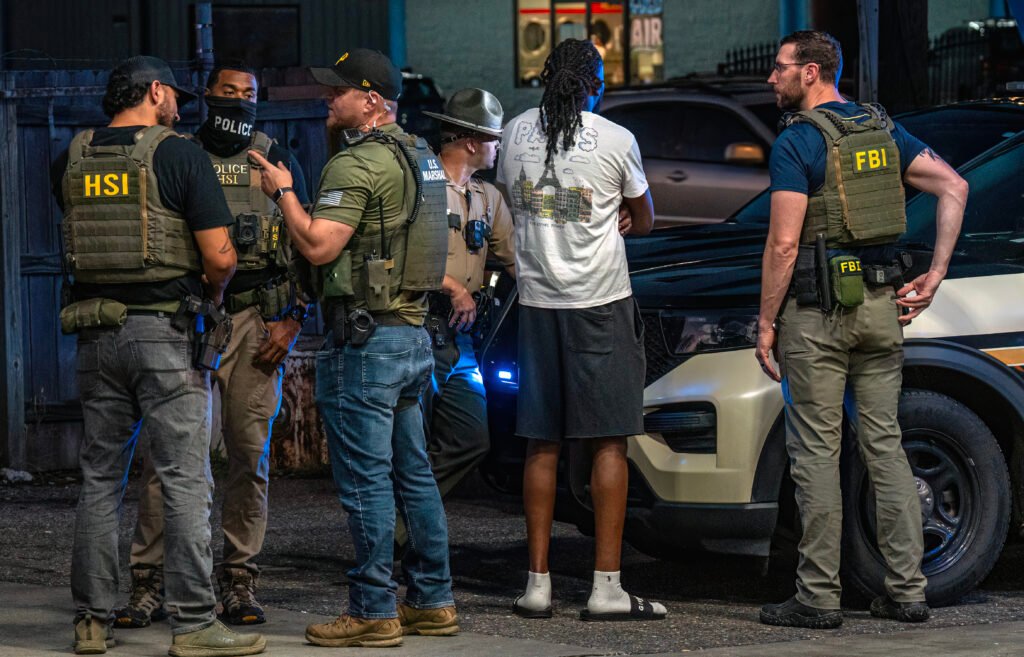Officials from various federal agencies, including the FBI and Immigration and Customs Enforcement, are present in Memphis, but their specific roles remain somewhat ambiguous.
Since the Memphis Safe Communities Task Force was established, it’s evident that a solid public safety strategy hasn’t been put in place. The communication strategy, well, it’s effectively more about narratives that benefit from the lack of clarity.
From the start, there were no public briefings detailing how success would be assessed, which agencies would be in charge of specific areas, or how law enforcement would work alongside different government sectors. When I tried to get answers about these points, I, unfortunately, didn’t receive straightforward responses. This gap allowed for a troubling tendency to focus on daily press releases instead of real outcomes.
The U.S. Attorney General’s Office can now share daily arrest figures. It sounds like progress, right? “562 people were arrested, and 144 illegal guns were seized…” Local law enforcement reported, “1,800 traffic tickets were issued…” Yet, the Justice Department noted it lacks a clear breakdown of these numbers.
Regardless, a headline is generated, a press conference occurs, and the cycle continues.
However, this data isn’t broken down, so we have no idea who got arrested or the reasons behind those arrests. There’s no clarity on whether these detentions correlate with trends in violent crime. It’s uncertain what will happen to these cases after the initial excitement fades. And while the focus is on a “tough on crime” approach, it’s unclear what other vital resources may be getting overlooked or cut, like violence prevention and community safety programs.
This is a classic example of “Copaganda”: creating a perception of action via law enforcement activities, yet lacking real proof of their effectiveness or necessity.
Numbers Game
Without a solid foundation, these “numbers” turn into a sort of placeholder for real policy. Arrest totals are presented as if they measure community safety. However, high arrest numbers, historically, don’t equate to reduced crime. We’ve seen this trend both here and nationally.
Absent a broader context, arrest figures reveal little about whether this method is effective. We don’t know if the arrests mainly occurred in predominantly black neighborhoods or if they were for serious violent offenses versus minor infractions. Plus, we’re left wondering if the communities affected will feel any safer. But controlling the narrative isn’t about accuracy; it’s about keeping the same loud story in circulation.
Media Collusion
Local media hasn’t provided adequate context for what’s going on. Instead of digging into the data or posing challenging follow-up questions, most news outlets simply report the daily numbers as if they were self-explanatory.
The truth is, numbers can mislead. They can be manipulated. While they don’t lie, the people presenting them might not be honest.
Even removing the flashy headlines, what we’re left with isn’t a comprehensive public safety strategy but rather a public relations initiative centered around police authority. As these figures get amplified without scrutiny, it becomes increasingly challenging for the public to discern genuine truths from mere noise.
Political Silence
Many elected officials have chosen to stay quiet, not necessarily because they endorse the current situation, but perhaps out of fear of being seen as “soft on crime” if they oppose law enforcement.
However, calling for transparency doesn’t imply endorsing crime. Asking for detailed data isn’t a hindrance. Demanding a clear plan isn’t antagonistic towards the police; it’s about ensuring accountability.
If local leaders don’t push for concrete metrics and transparent reports, the Memphis Safety Task Force might just continue its cycle of actions, press releases, and repeated headlines.
Accountability or Spectacle?
It was supposed to outline a clear strategy and accountability from the beginning—and it still can happen.
- Segmented reporting: Categorizing arrests and stops by type, charges, location, demographics, and outcomes.
- Clear goals and timeline: Informing the public what “success” really entails.
- Independent evaluation: Having assessments conducted by outside parties, not by those leading the initiative.
- Transparency in resource allocations: Clarifying how much funding goes towards enforcement compared to prevention and intervention.
Ultimately, public safety isn’t about counting how many are stopped or arrested. The real question is whether communities are becoming safer, healthier, and more stable. It hinges on whether key issues like poverty, unemployment, lack of mental health resources, and disinvestment are tackled with the same urgency as press conferences.
Currently, what we have isn’t a safety plan; it’s more of a show. And as long as it remains a spectacle, the underlying issues will continue to go unaddressed, even as the numbers rise.







